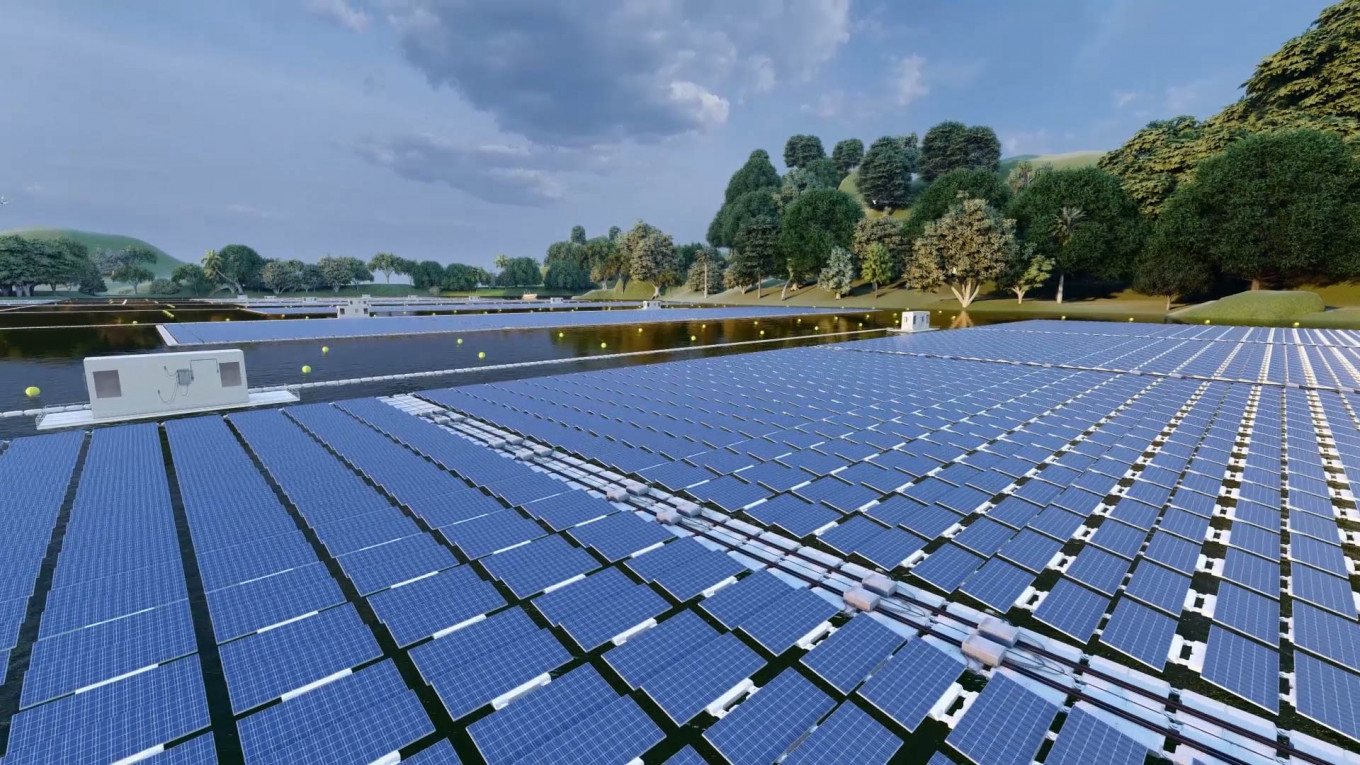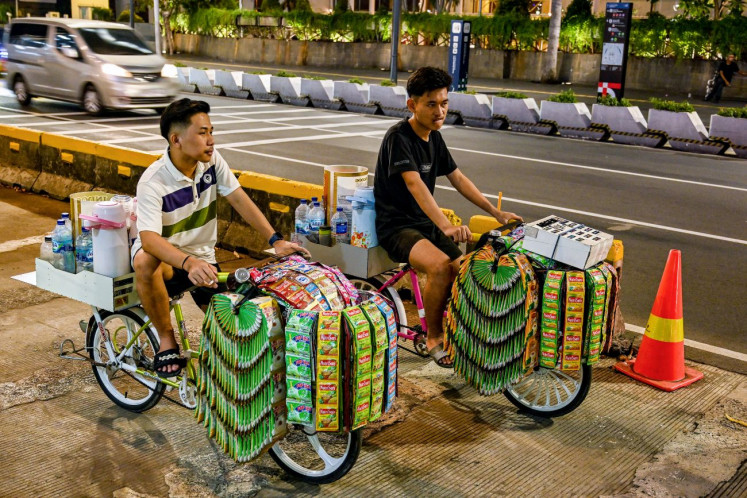Popular Reads
Top Results
Can't find what you're looking for?
View all search resultsPopular Reads
Top Results
Can't find what you're looking for?
View all search resultsGreen innovation can be the greatest gift to our children
The global drive toward renewable energy offers an opportunity to combine human technological endeavors with nature’s rich bounty, especially in resource-rich Indonesia.
Change text size
Gift Premium Articles
to Anyone
W
hat kind of world do we want to leave for our children? This is a question that many of us, including myself, have been contemplating as the planet reels from unprecedented heat waves.
We are all now living in an “era of global boiling”, according to United Nations Secretary-General António Guterres.
July 2023 was the hottest month on record as large swaths of the planet, including Southeast Asia, struggled to cope with unbearable temperatures.
Earth is ringing its emergency alarm, and it is my generation’s responsibility to listen and act. Our actions today will make or break our children’s futures.
Yet, even amid crisis, humanity can rise to the occasion: To be able to innovate, improve and learn are among our greatest gifts.
Today, renewable energy and advances in green technology provide us with an opportunity to safeguard the planet without stunting economic progress. We can harness nature’s boundless power to cut carbon emissions without compromising on livelihoods.
This concept can be seen in action in my home province of West Java, where we are developing Southeast Asia’s largest floating solar power plant. Using the abundance of water to capture the Sun’s power, the 145-megawatt plant sits on the beautiful Cirata Dam in Purwakarta.
Solar energy is converted into electricity to power 50,000 homes and cut 214,000 tonnes of emissions every year. It has also created over 1,400 jobs and generated funds to help refurbish schools.
Cutting-edge technology allows solar panels to be installed on water; an important development for countries where land may be scarce but water is abundant. Water’s cooling effect can also make floating panels more efficient, while reducing evaporation and saving fresh water for drinking and irrigation.
As the world’s largest archipelago, Indonesia is an ideal location for this project, which is also a testament to the power of international collaboration.
The plant is being developed under a partnership between PT Pembangkitan Jawa Bali Investasi, a leading Indonesian electricity and energy investment company, and Masdar, the United Arab Emirates’ flagship renewable energy company.
Next month, the UAE will host the COP28 UN climate change conference.
The Cirata floating solar power plant, which combines the innovation and passion of UAE and Indonesian entities, shows that positive, practical, collaborative action is possible. In addition to collaboration, we also need to foster political will, innovation and investment from each country and every sector.
As the largest economy in ASEAN and with our vast natural resources, Indonesia is well placed to take a leading role in the global energy transition. We aim to reach net zero emissions by 2060 or earlier. To get there, we will have to tap our impressive renewables prospects.
Indonesia’s solar potential could be as high as 3,000 gigawatts (GW), according to the International Renewable Energy Agency (IRENA). To put this into context, the agency also said the world must add an average 1,000 GW of renewable power capacity each year until 2030 to keep the target of limiting global warming to 1.5 degrees Celsius within reach.
In 2021, renewables accounted for 14 percent of Indonesia’s energy mix. The country aims to increase that to 23 percent by 2025. Clearly, there is massive potential for innovative projects such as the Cirata solar plant to make this vision a reality.
A recent regulatory development from the Public Works and Housing Ministry now allows up to 20 percent of water coverage for renewable energy use. Cirata’s developers plan to capitalize on this opportunity.
In September, Masdar and PLN Nusantara Power (PLN NP) signed an agreement to triple Cirata’s capacity up to 500 MW. This major expansion shows that once our societies have successful schemes for tackling climate change, we can run with them.
Since the industrial revolution, humankind has found ways to become bigger, faster and stronger than ever before. Some of our achievements have taken us away from nature. But the truth remains that we are a part of nature and nature is a part of us.
Renewable energy provides the opportunity to combine human technological endeavors with nature’s rich bounty. It can help decarbonize the planet without halting progress.
My generation must strive toward this goal, every single day, for this is the greatest legacy we can leave for our children, and their children.
***
The writer is a former West Java governor and former chairman of the Association of Regional Governments for Renewable Energy.











